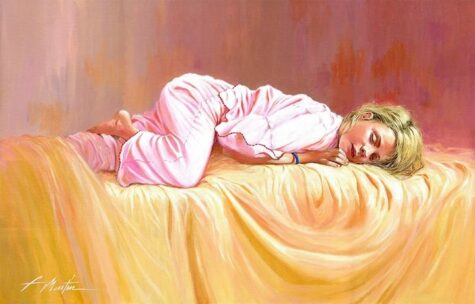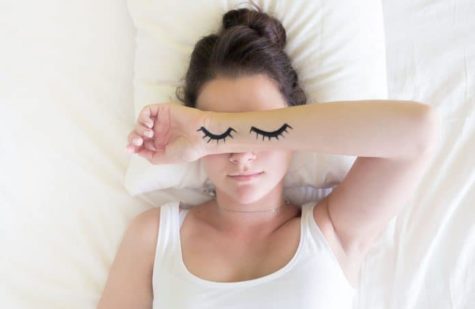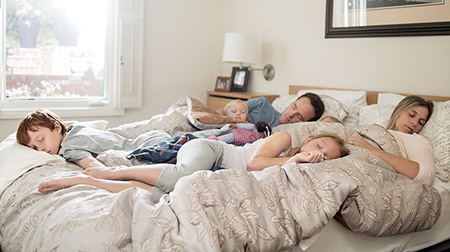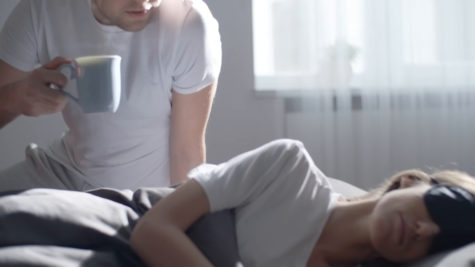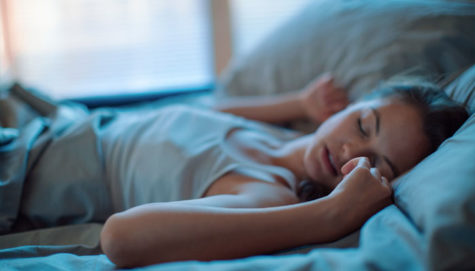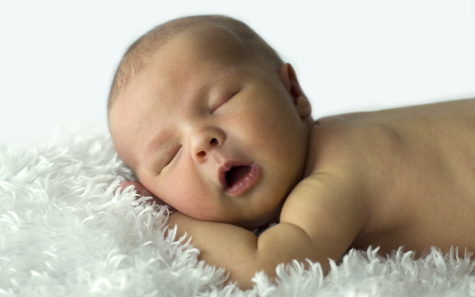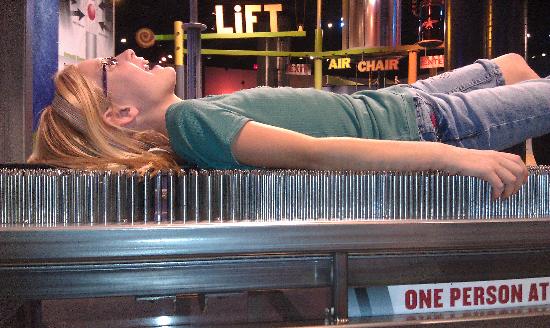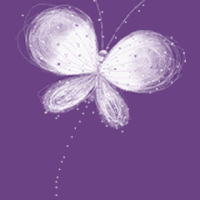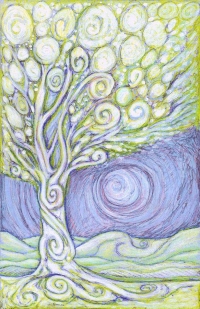Sleep
Sleep Positions
Did you know that when you sleep you place your hands on the parts of the body that require healing?
- Above your head – you seek greater spiritual connection.
- On your chest – you have feelings that you still need to heal.
- Stomach – anger and furious feelings.
- Between your legs – fear, feelings of emptiness.
- Sex organs or near them – sexual problems and lack of expression.
- Under your pillow – hidden emotions, not showing what we really feel or our true intentions.
- Hugging yourself – lack of affection or support from your loved ones.
- Shoulders – exhaustion, lack of energy.
- The hands between your head and the pillow – there is tranquility within you.
If you don’t place your hands on your body while sleeping it means you are fine and in peace with yourself. If you hug your partner, It means nothing but the love you have for them.
Healing Sleep
Sleep is one of nature’s greatest inventions and blessings of life. It is a periodic rest of the body which is absolutely essential for its efficient functioning. It has been called ” most cheering restorative of tired bodies. ” Sleep is the indispensable condition to the recuperation of energy. We go to bed fatigued and get up refreshed. Sleep repairs the wear and tear of the body and mind incurred during waking hours.
Nothing is so restorative to the nerves as sound and uninterrupted sleep. Sleep is thus a vital element in a total way of life. It is a basic need in man’s mental as well as physical life. During sleep most of the functions of the body are carried on at the lowest level possible in health.
Heat production is from 10 to 15 per cent below the basal level. The mechanism regulating the body temperature are less sensitive than in the waking state and are depressed by 0.5 to 1.0 degree F. The rate of the heart is reduced by 10 to 30 beats per minute and a decline in blood pressure of about 20 mm occurs in quiet restful sleep. The urine volume is considerably reduced, but its concentration in solids is increased. The tone of all the skeletal muscles is lessened. The eyes are usually rolled upward and the pupils constricted.
Loss of sleep exerts seriously detrimental effects upon the nervous system. Long periods of wakefulness may cause profound psychological changes such as loss of memory, irritability, hallucination and even schizophrenic manifestations. During the last World War, prisoners in Nazi concentration camps who kept awake for days by strong lights and blaring wireless sets, collapsed.
Sleep Versus Rest
For correct living, it is essential to differential between sleep and rest. At rest the body is disturbed by all exterior noises ; but in sleep it is screened from them by partial loss of consciousness and also by what is called ” dream protection. ” One useful purpose of the dream is to convert outside noises that might awake the sleeping person, into fantasies that do not disturb him.
During rest the limbs are normal, but in sleep they swell. Blood flows from the brain, distends the arteries, and makes the limbs bigger. IN sleep more muscles are relaxed than in rest, though the sleeping person changes his position about 35 times in one night, without knowing it. Many organs which work during rest suspend their activities in sleep. Thus the recouping value of sleep is much more than that of rest or simple lying down.
Theories of sleep
Many theories of sleep have been advanced to explain the temporary loss of consciousness which we know as sleep. The oldest theory is that sleep is induced by a reduction in the blood supply to the brain or at least to conscious centers. This is known as ischemic theory. Even the ancient Greek physicians were aware that the carotid artery was in a way concerned with the onset of sleep. The name itself expresses this belief. The Greek word ‘ Karotides’ for carotid arteries is derived from karoo which means ‘put to sleep.’
In modern times, the drowsiness after a meal, presumably due to the diversion of blood from the brain to the digestive organs, is cited in support of the ischemic theory. Another important theory about sleep is the chemical theory.
As a result of experiments in the metabolism of sleeping subjects, it is considered that the fatigue inducing sleep may be a mild form of blood poisoning or toxaemia. This ” poisoning” is believed to be brought on by the expenditure of energy during the waking hours. According to this theory, every contraction of a muscle and every impulse passing through the brain or the nerves breaks down a certain amount of tissue. The debris from broken down tissue is then thrown into the bloodstream. In the waking state, much of the waste from broken down tissue is got rid of through the natural eliminating processes of lungs, kidneys, bowels and skin.
But there comes a saturation point when there is such an accumulation of waste that it cannot be disposed of by these processes and it then invades the grey matter of the brain. In such an eventuality, mental and physical alertness are impaired. It is nature’s warning that the waste product must be reduced to replenish the lost energy. So we get tired and the urge to get sleep becomes irresistible.
During sleep, the cells and tissues that break down to produce toxic waste become less active and the production of toxic waste is vastly reduced. Simultaneously, constructive activities take place within the body during sleep, which rebuild the broken down tissue.
Another theory places a sleeping center in the hypothalamus. Many of the bodily changes in sleep such as constriction of pupils, reduced frequency of heart beat, increased gastric tone and secretion are manifestations of the activity of hypothalamus nuclei, especially parasympathetic centers. Perhaps some of the sleeping pills affect this center in the brain.
Although the various theories have certain amount of experimental evidence to support them, none has really solved what is the most mysterious process in our lives. All we know is that sleep substitutes constructive measures for the destructive processes of our waking hours. We cannot live without sleep.
Duration
Another mystery about sleep is that no two persons need the same amount of sleep. Dr. Nathaniel Kleitman, Associate Professor of Physiology at the University of Chicago, who conducted years of extensive experiments at the University’s “Sleeping Laboratory” says that there is no more a normal duration of sleep than there is normal height and weight. A study of 25 subjects spread over thousands of nights showed that the average amount of sleep needed to feel well rested is seven-and-a-half hours, though individuals varied from six to nine hours.
According to Dr. Dennis Williams, a noted authority on sleep, the amount of sleep needed for an individual’s well-being, is determined by what he feels he needs, not by what other people, including the doctor, think is reasonable. On the whole, women sleep from 45 minutes to one hour more than men. The amount of sleep required varies at different ages as follows :
- New Born : 18 to 20 hours
- Growing children : 10 to 12 hours
- Adults : 6 to 9 hours
- Aged persons : 5 to 7 hours
The depth of ordinary restful sleep fluctuates throughout the sleep. In most adults, sleep deepens through the first hour, after which it lightens rather sharply and then more gradually until morning or until the usual time of wakening. In growing children, however, sleep deepens a second time for a little while.
According to Dr. Lindlahr, a famous naturopath, two hours before and two hours after midnight are the most valuable for sleep of all the twenty-four hours of the day. In these four hours, mental and physical vigor are at their lowest ebb and sleep is soundest and most natural.
It is believed that three-quarters of our sleep consists of what is called ‘ slow wave sleep.’ The restorative processes occur during this time. The remaining quarter is taken by what is called ‘rapid eye movement (REM) sleep.’ It is also called paradoxical or dreaming sleep and it comes in episodes of about 20 minutes duration about five times in a night. It involves dreaming, irregular heart rates, raised blood pressure and erection of the penis. It is in this phase of sleep that normal healthy young men may have wet dreams. Both forms of sleep are considered equally important, being normal sleeping rhythms.
Sleeping positions
There are many theories about good and bad sleeping positions. Practically everyone changes positions several times during sleep. Hence how one starts out is of no consequence. It is a good thing we do turn about in our beds. If we did not, we would awake in the morning stiff, having maintained the same position all night.
For proper sleep, however, one should not sleep on one’s back but on the side with one or both legs brought well up and the head and the shoulder slightly forward.
To Sleep Well
Sleeping pills are no remedy for sleeplessness. They are habit-forming and become less effective when taken continuously. They lower the I.Q. dull the brain and can prove fatal if taken in excess or before or after alcohol. The side-effect of sleeping pills include indigestion, skin rashes, lowered resistance to infection, circulatory and respiratory problems, poor appetite, high blood pressure,kidney and liver problems and mental confusion.
Sleeping well is an art. It needs a perfect blend of healthy habits and control of mind. A clean body and mind, relaxed mood, physical exercises, and perfect dietary control are some of the basic sleep-inducing methods. Unpleasant situations at bed time such as arguments, quarrels, watching a horror movie, listening to loud music which would create anxiety, fear, excitement and worries should be avoided. Such situations stimulate the cerebral cortex and tend to keep one awake.
The sleeping place should be well ventilated, with balanced temperature and free from noises. The bed should be neither too hard nor too soft, but comfortable. The pillow should not be too hard or too high. The bed clothes should be loose-fitting and light colored. Another important rule is not to have heavy food shortly before bed time.
Sleeping On A Bed of Nails
Can modern day “bed of nails” help back pain?
Most people will be affected by back pain at some point in their lives. And lots of money is spent in their quest for relief. But a new treatment is gaining momentum, “Early Show” contributor Taryn Winter Brill said Monday.
Imagine lying down on a device that mimics a bed of nails! Mats with thousands of nail-like plastic spikes are being touted as a relaxation technique that may relieve back pain, stress, and even cure insomnia.
If you feel that strain and pain in your lower back, your misery is in good company. “What the data shows is that 80 percent of the Americans will experience lower back pain in some point in their lifetime, and that’s probably an understatement,” Dr. Christopher Gharibo of NYU Medical Center explained.
It is estimated that at any given time, more than 30 million Americans are experiencing back pain, and back pain is big business — from patches to pills, back pain sufferers will try almost anything to get relief.
“Patients come in often and tell me, for example, ‘Doctor, just cut the nerve, do whatever you need to do to address this back. I just simply can’t go on like this. I’ll have surgery, I’ll have injections, give me the medication. I need but I really need help to be able to function,'”‘Dr. Gharibo said.
But will they try what’s called a “Halsa” mat, which looks a little like a tool for torture? “Some people call it an acupressure mat or a nail bed,” product spokesperson Brenna Haysom said.
Yeah, she said nail bed — that thing you might see a yogi using for meditation or a stunt guy showing off how tough he is. This modern version replaces the nails with more than 8,000 pointy plastic spikes. And it’s supposed to help relax you and relieve pain.
Winter Brill tried it out. “There was definitely a prickly feeling, but it didn’t hurt like I imagined it would,” she remarked.
“Just to get a sense of what’s happening, this is stimulating pressure points which are releasing hormones?” she asked.
“Yes, hormones,” Haysom, the spokesperson, replied.
The mat is based on the theory of acupressure: that the body is lined with “pressure points” which, when stimulated, release the body’s natural pain-relieving hormones.
For further evaluation, “The Early Show” took the mat to colleague Geri Papiernick, a chronic back pain sufferer. “I get sharp shooting pains in my hips and down the legs. I get sharp shooting pains and it just stops you in your tracks,” Papiernick explained.
It’s been this way for 15 years, and five surgeries haven’t helped. Her pain is so chronic, so excruciating, she’s forced to take a legion of pills — between 12 and 18 a day including morphine and methadone — just to function.
Papiernick was willing to give the mat a try. She said it didn’t hurt to lie on the mat, and she said it felt good just to lie on the floor.
Asked if she could see herself doing this on a daily basis, Papiernick said, “Sure, if there were a long term beneficial effect, I could do it every day.”
And it’s in the pursuit of that daily relief that Papienick and her fellow back pain sufferers will spend at least $50 billion a year on remedies.
While research so far is preliminary, recent studies have shown that nail mats used 15 minutes a day for three weeks reduced patients’ peak levels of pain.
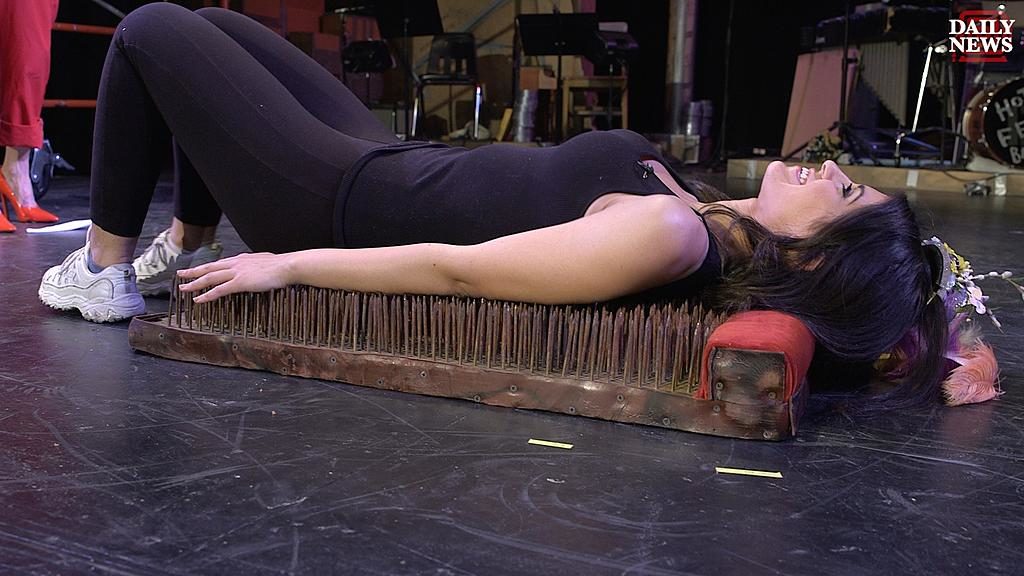
They found that back temperature was higher on the nail mats as compared to a traditional mattress, as a result of increased circulation. Also the heart rate was lowered, indicating greater relaxation.
Source: CBS News
